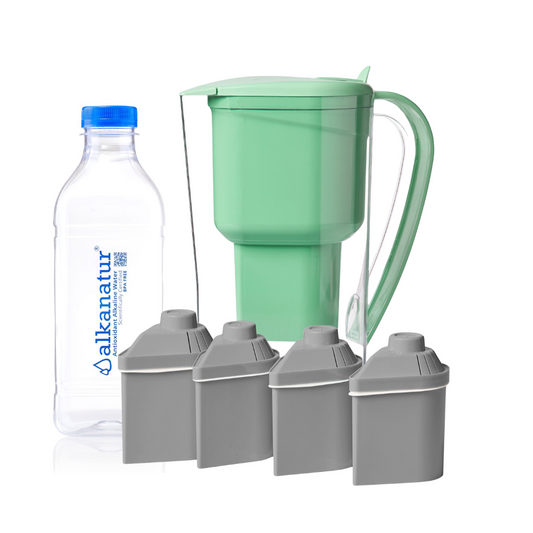Green tea is made from the leaves of the Camellia sinensis plant, and, unlike black tea, it is much healthier and more recommendable than the previous one.
The green tea leaves are collected when they are still fresh, (this is the main difference from black tea and therefore contains half the caffeine than black tea) then dried and crushed to be marketed as an infusion. It is a beverage that has been used to promote health for five thousand years and is still present today showing its good reputation.
Although tea contains theine, which is the same molecule as caffeine, green tea exerts a minor impact on the pH balance after ingesting it. This happens because the amount of caffeine is lower than in coffee and also the caffeine absorption of tea is much slower because it contains twice the polyphenols.
Tea also contains very antioxidant substances known as catechins, which are the subject of numerous studies and have a very favorable effect on our health. Studies also show that this substance exceeds the antioxidant power of vitamin E and vitamin C by 20 and 100 times respectively.
For this reason I consider green tea one of the healthy and recommended acidifying foods to be included in our diet within 20% (proportion 80% -20%).
Good reasons to replace coffee with tea
Although the tea contains theine or caffeine, the amount that gives us a cup is the eighth part compared to the same millilitres of coffee. The imbalance that exerts on our pH is much more subtle than in the case of coffee.
If we take a look at Asian culture, we will observe that Japan is one of the countries whose population has one of the highest longevity rates. The fact that coincides with high consumption of green tea, around which a whole ceremony or ritual that is part of its most deeply rooted culture takes place.
Fun studies highlight its innumerable positive effects on our health, from its anti-inflammatory power to its cholesterol regulating effect.
Alkanatur Alkaline Water Filter Pitcher with Magnesium & Antioxidants – Alkanatur North America









